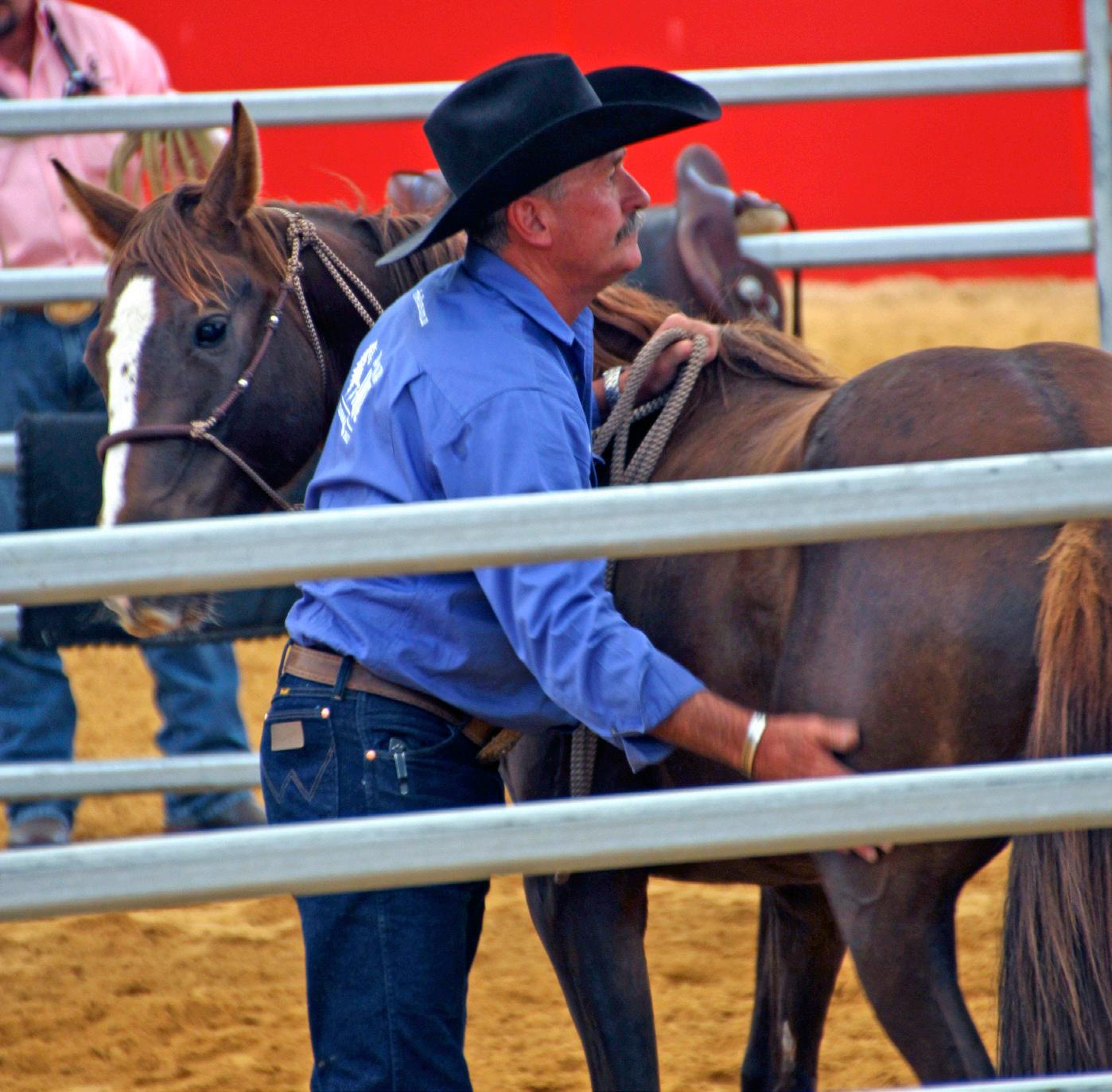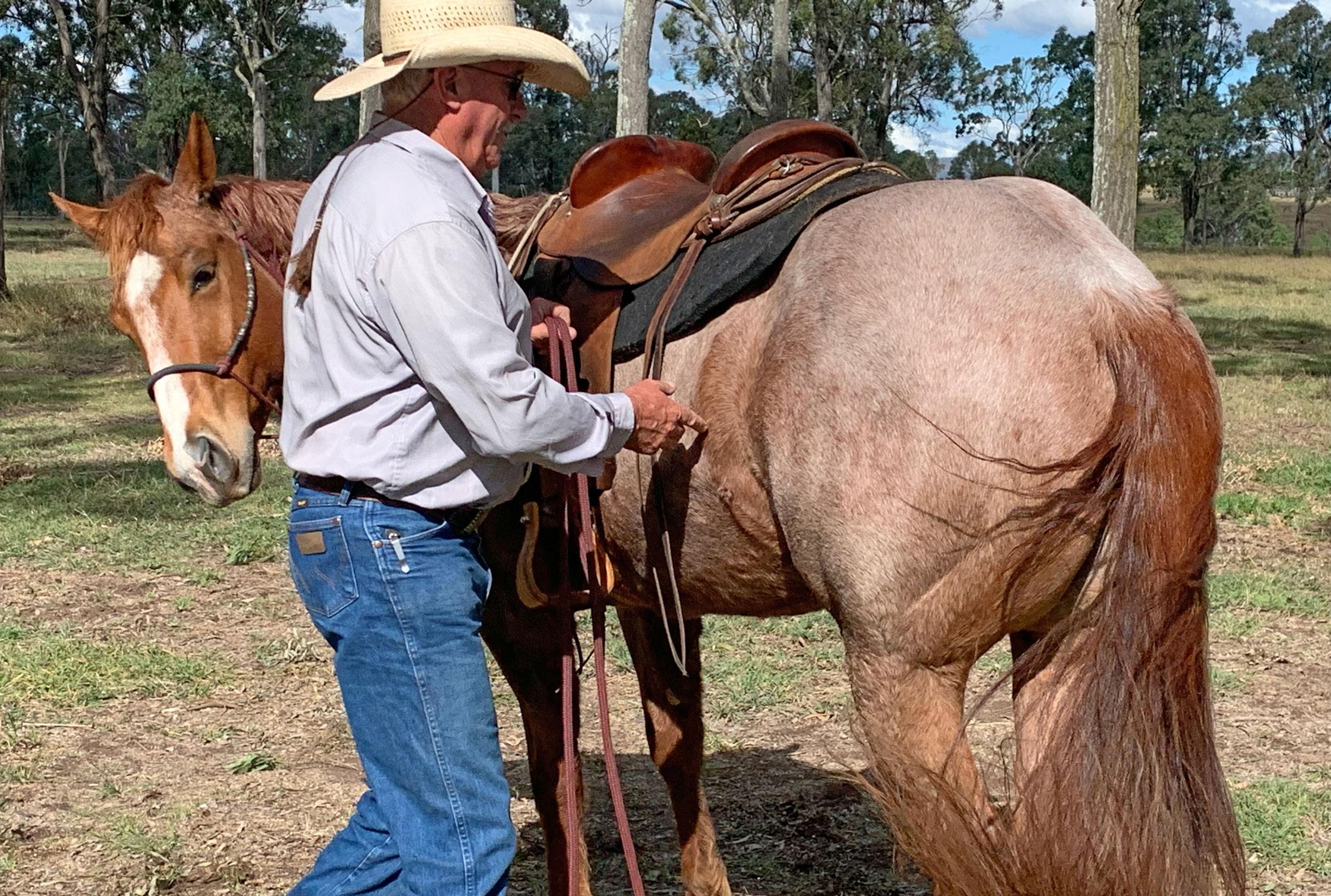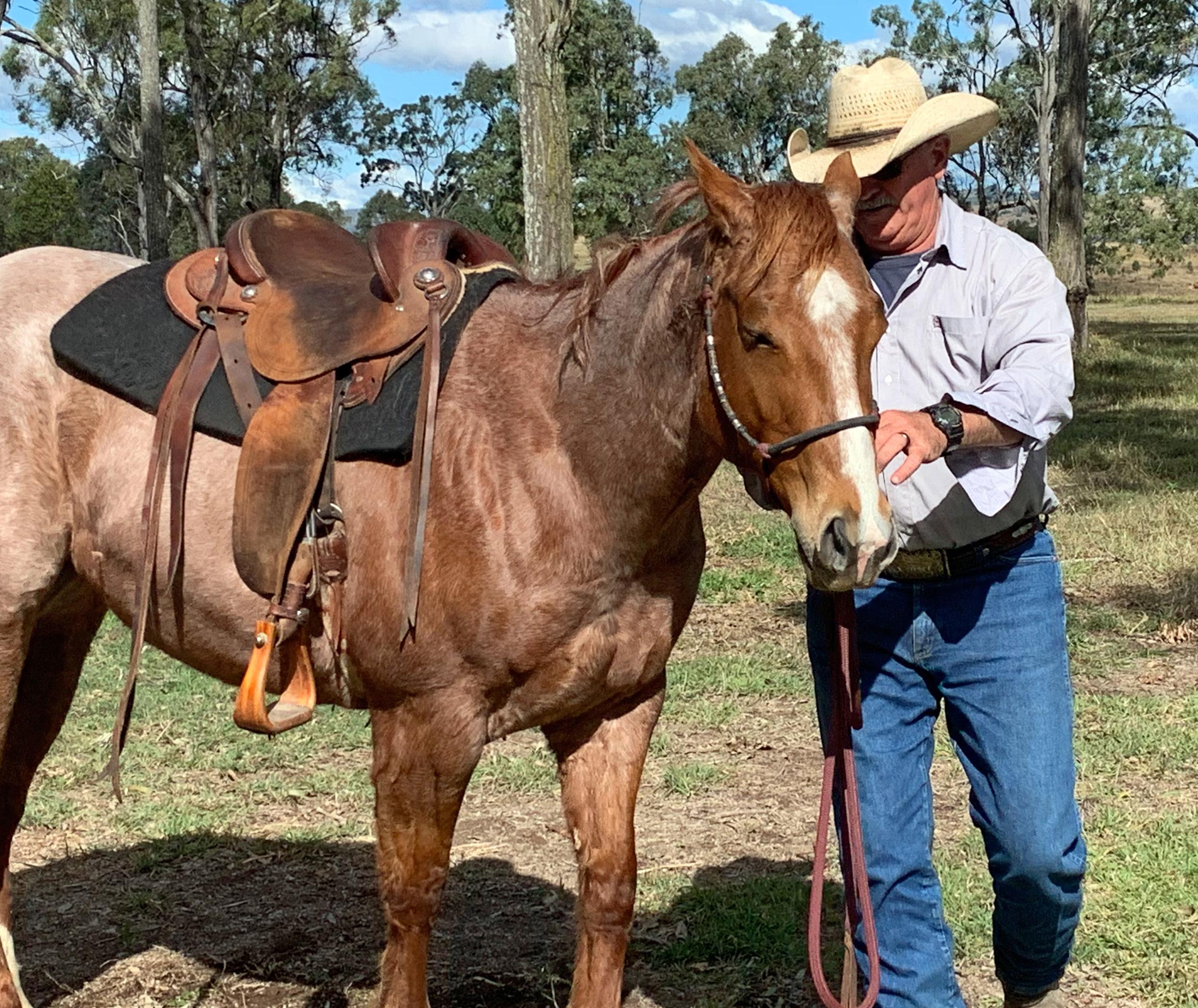
9 minute read
Training Tips: From the Ground Up
TRAINING TIPS
From the ground up
Rodeoing, training, breeding, showing, KEN FAULKNER has been involved with horses for most of his life. He teaches Natural Horsemanship around the globe and is a stickler for good groundwork.
Whatever your discipline, it's a bit short sighted to think a horse will ride any better than he handles on the ground.
Reluctance to spend time with groundwork can often be down to a bit of laziness on the rider’s part, or not knowing what good groundwork skills actually are. Some people think they can lunge a horse and tire it out enough to get on safely – but if you think it won’t buck you off if it’s going to, you’re dreaming!
Horses don’t buck physically, they buck emotionally, and the conventional style of lunging won’t do much for your horse mentally or emotionally. You’re really just warming him up, so if he’s in a
Move the horse’s front end around in a circle using pressure on the side of his nose, making sure he looks in the direction of the turn.
RIGHT: Rub the horse where the saddle will eventually go. All images courtesy Australian Horsemanship.
negative state of mind you'll actually be helping him to buck you off!
Groundwork is the best way to get the emotions fixed before you get into the saddle to work on the physical. But like any training principle, there should be a point to it – and you need to have the patience to give the horse enough time to see the point.
With all the groundwork skills I use, I have a particular outcome in mind – in others words, there’s a point to them.
The super seven
Groundwork Skill One: Lateral Flexion
How do you know your horse is solid enough to be quiet? He can bend. A defensive horse won’t bend. So, we’re looking for a lateral bend, and we get this by shortening the lead rope and rubbing the horse along his neck, side and rump while using a gentle pulsing (I call it milking) on the lead rope to encourage him to turn his head and release, with the bend running right through his body: poll, neck, shoulder and ribs. If he won’t flex, ask him to move his hindquarters a step and try again.
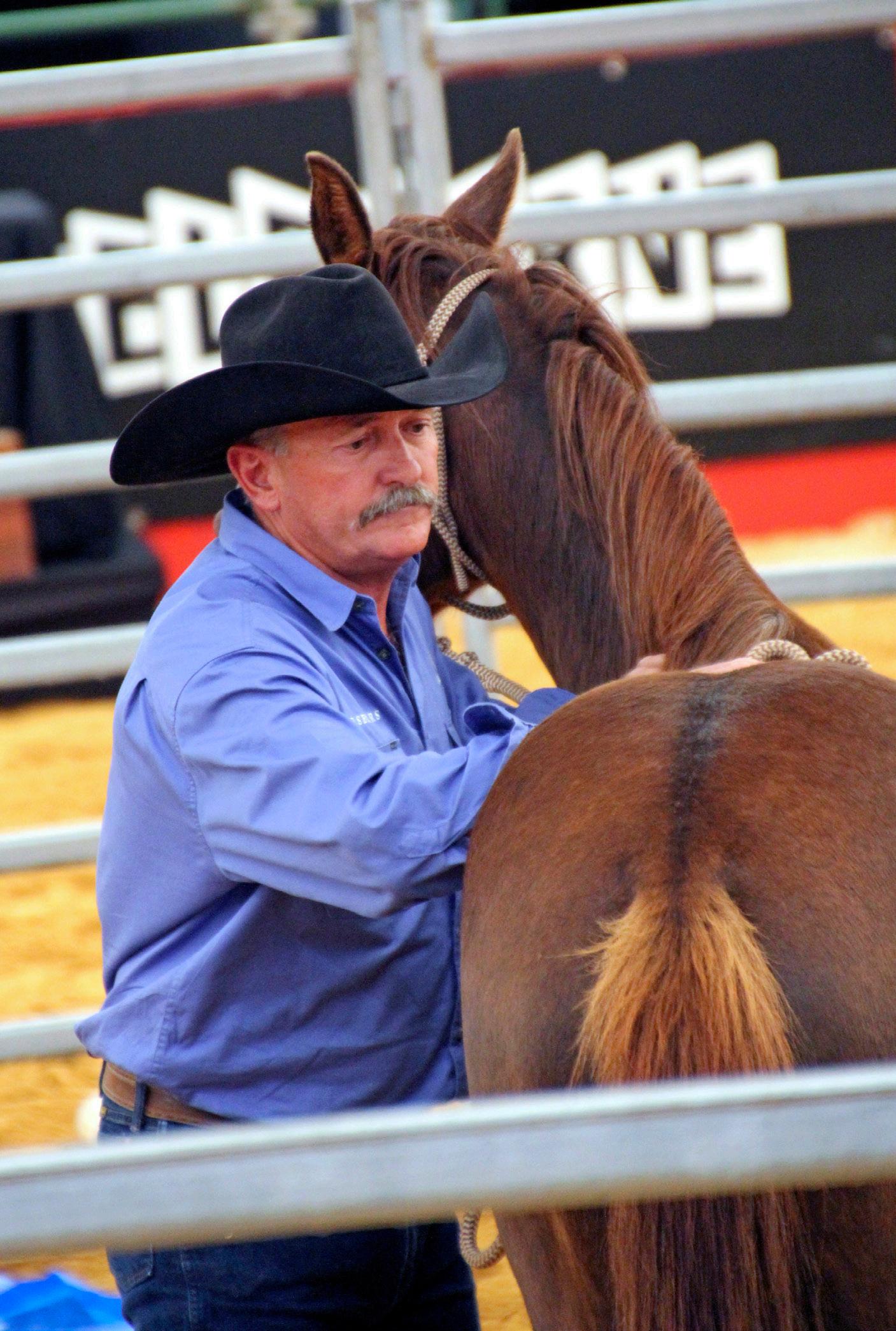
Groundwork Skill Two: Yield to feel
One of the miracles of horsemanship is getting a prey animal to yield to feel. We use our hands, feet, reins, the bit, but what we don’t recognise is that prey animals push against pressure. That’s why some horses are heavy when they’re ridden. When they’re heavy to the legs and reluctant to move, it's because we
haven't stimulated them and got them past the idea of resisting pressure. So, holding the halter rope, stand beside your horse’s body and using fingertip pressure in the area of your leg position, ask the horse to move around you in a lateral bend. Work on this until your horse responds to a light touch.
Groundwork Skill Three: Get your horse to notice the energy in your body and to shift his energy in response
If I stand tall and breath in deeply, the energy in my body increases and he should notice and shift his feet in a lateral
A well trained horse with a good foundation becomes a willing partner.

Groundwork Skill Four: This is an impulsion check
How soft are your horse’s feet? Does he move his feet freely and easily when we ask him to go backwards and forwards a few steps, or is he reluctant? The more relaxed they are the more relaxed their feet. Nervous horses have nervous feet, lazy horses drag their feet. Groundwork Skill Five: The essence of circles is lateral flexion in movement
Can the horse keep his inside back leg tracked with his outside front leg while he’s lunged on a 10 metre circle? The circles are pretty much irrelevant - it’s his balance as he learns to do transitions and turns that’s important. Focus on the horse as he circles and gently milk the lead rope to encourage the nose in while pointing a stick (I prefer an inflexible stick or pole to a whip) at his hindquarters. If he refuses to bend, stop him and start again.
This is all about transitions, flexion and turns, not the number of circles. When the back legs and front legs step equally in their stride, that means they’re engaged and the horse is pushing with his hindquarters rather than front end.
Groundwork Skill Six: Sideways/Lateral movement
Can my horse step laterally on an angle or square? Encourage this by blocking his forward motion either by pressure on his halter or standing in front of him, while asking him to step sideways by tapping him on his ribs with your stick.
Groundwork Skill Seven: Addressing the horse's natural sense of claustrophobia
In their natural state, horses have a flight line. Anything that challenges their ability to run (horse floats, alley ways, stables, any enclosed area) increases their claustrophobia. So I might ask him to step between me and a fence, or to jump over, go through, or around something, perhaps a tarp, or a horse rug over his body, or ask him to walk between some barrels.
Pre-flight check
To me, groundwork is a great pre-flight check. It's a great way to get together with your horse before you get on. One of the biggest de-trainers of horses is surplus energy, and groundwork skills are a great way to regulate that energy so when you get on, you don’t have to hang on to the reins to hold the horse back.
Once we’ve run through our groundwork skills, the horse will be more balanced and emotionally settled. Then we just hop on and do the same groundwork techniques again, the only difference is now we’re on their back.
RIDING THE RANGE
Boot scootin’ good times with these Western essentials
2
1


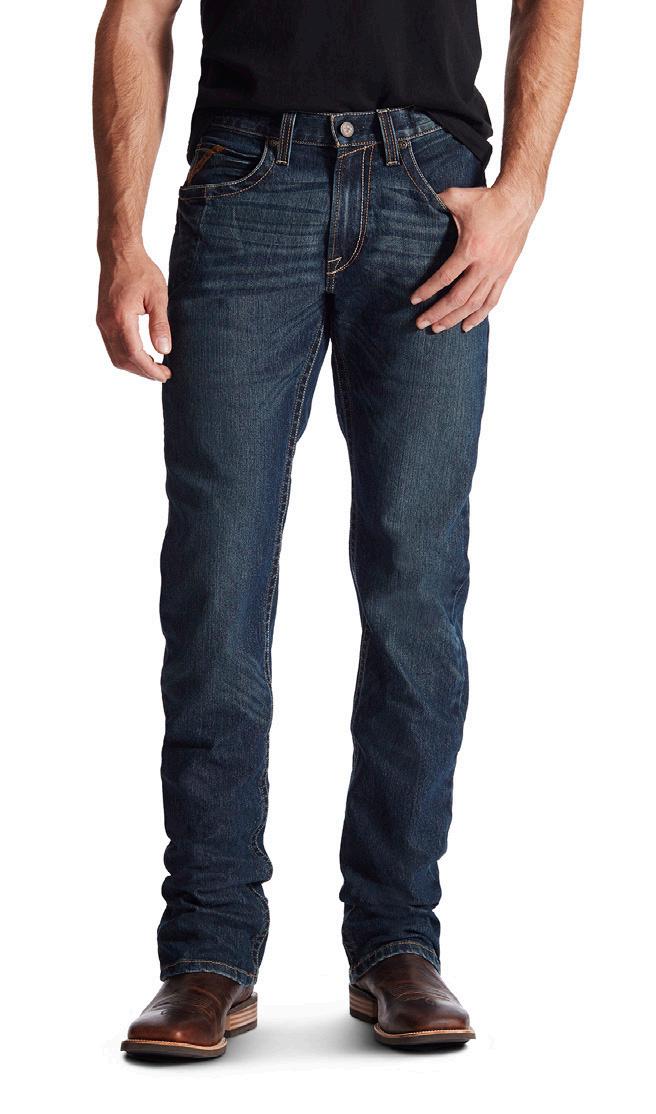
4 5 3
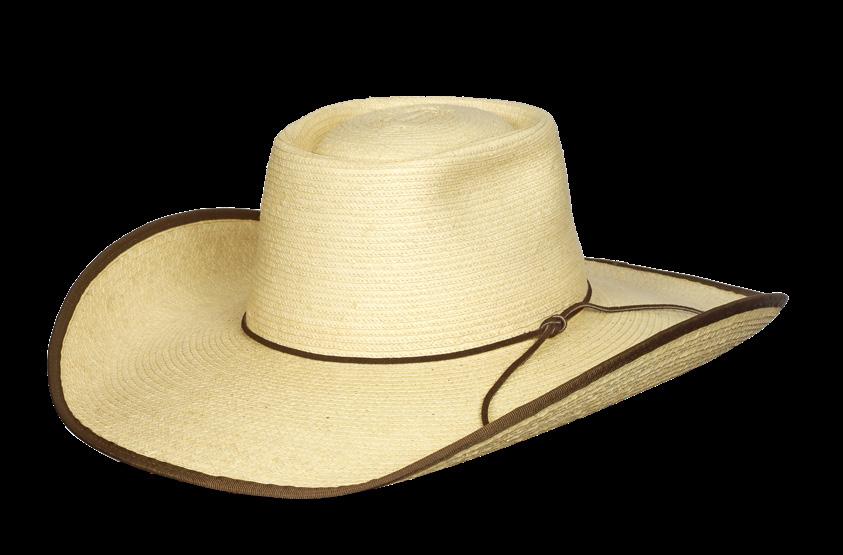
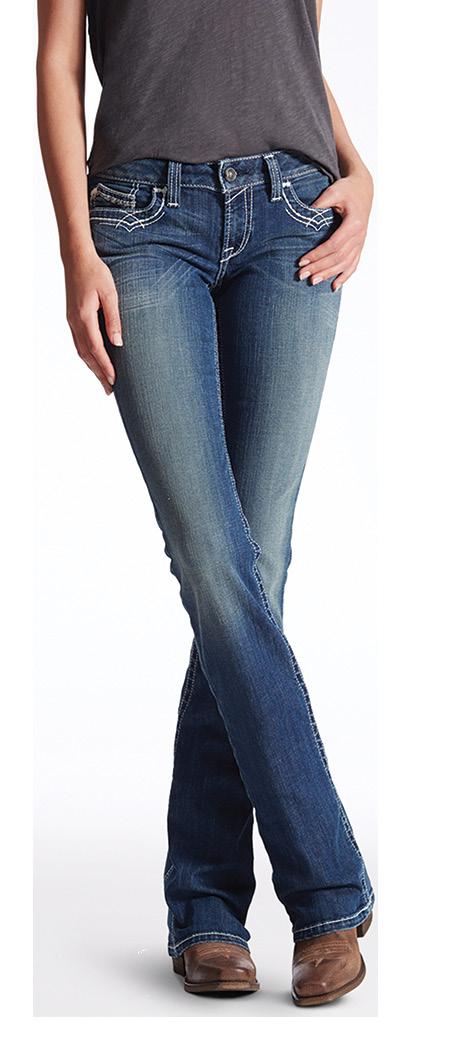
6
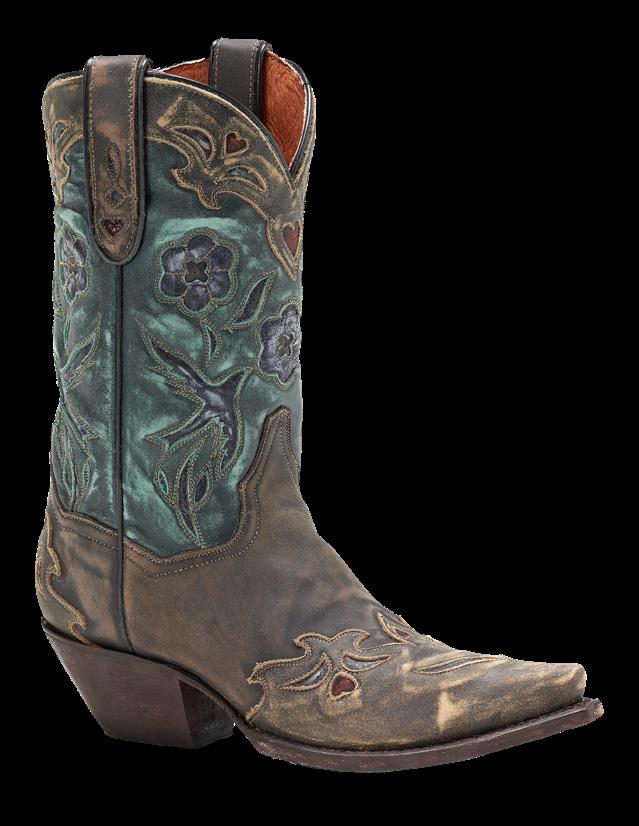
1. THE SADDLE HUB Ivy Wade Saddle 15.5″ – $2,600. 2. ARIAT Men’s Rebar M5 Slim DuraStretch Edge Stackable Straight Leg – $125. 3. THE SADDLE HUB Billy Royal Western Saddle 16” – $1,600. 4. DAN POST Vintage Bluebird Western Fashion Boots, rugged vintage styling meets delicate feminine detailing – RRP $479.00. 5. SUNBODY Alex Natural/Chocolate Bound Edge Hat – $114.95. 6. EQUESTRIAN HUB Woven stretch belt, available in 35 colours – $25.00, Members Price $21.25. 7. ARIAT Women’s R.E.A.L.™ Mid Rise Stretch Entwined Boot Cut Marine – $139.95. Stockist info page 112.
7

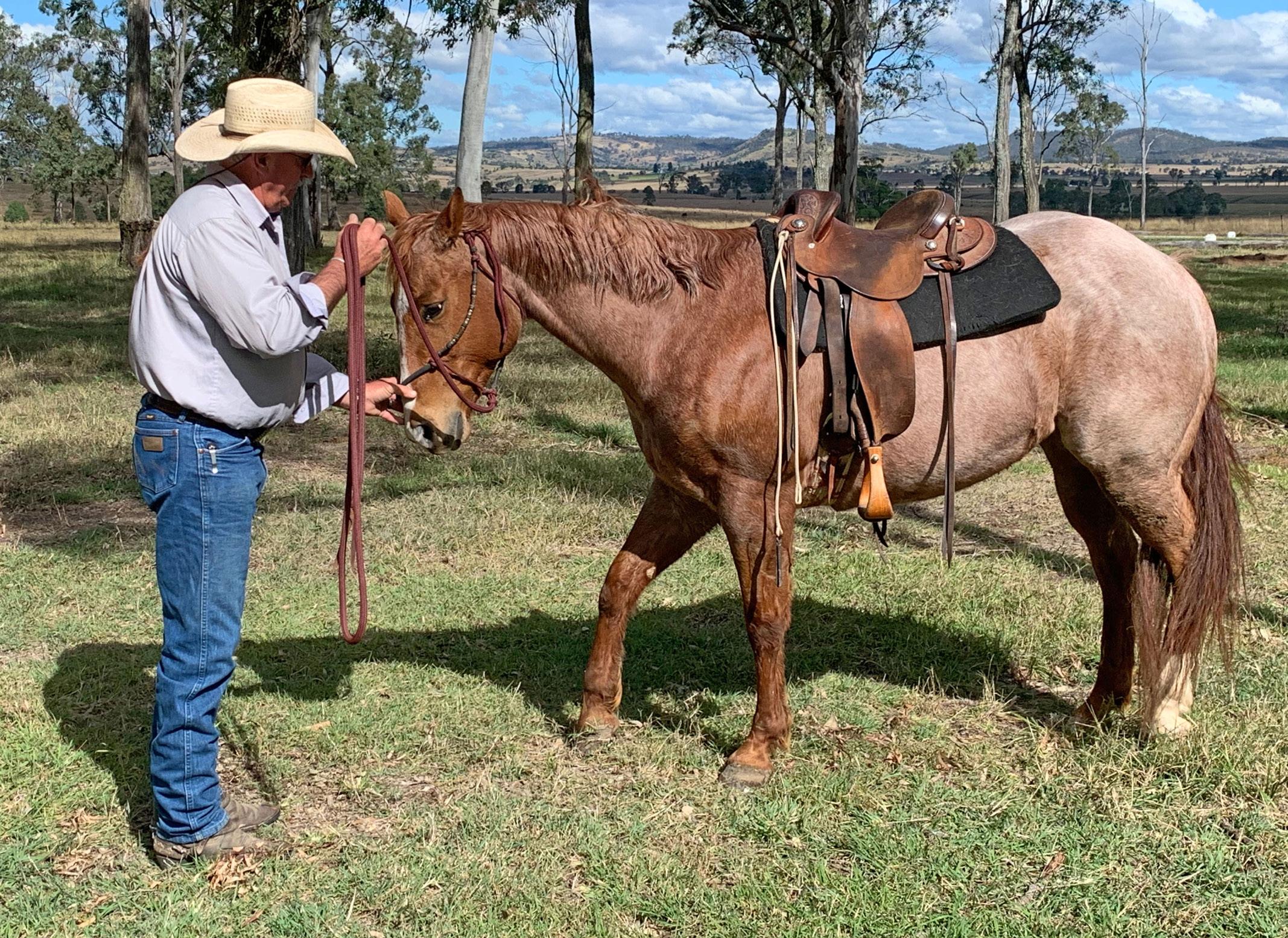
Ask the horse to step softly and willingly backwards from slight pressure on the front of his nose.
to teach him control and the ‘buttons’ or cues that I need him to have for the rest of his life. For my older horses, groundwork is their stretching and Pilates exercises. As a horse gets older, I need to keep him supple and healthy if I want him to live and function into old age. And with every animal, us included, stretching is good for you.
With my young horses I might spend anything up to half an hour or more on groundwork before I get on them. For my partnership horses, I spend a lot less time on groundwork but I make sure I’ve worked them into a good place before I get on. For my advanced horses I just give them a little pre-flight check that might only take 30 seconds to a couple of minutes.
Own the hindquarters
And to that I would add if you want to be safe, own the horse’s hindquarters whether you’re on the ground or on his back. Be able to direct the hindquarters off a straight line. A defensive horse won’t bend laterally because as a prey animal, they want to be straight so they can run away. If you can move the hindquarters laterally, you’re telling them they’re at the
end of their flight line. The flight line is the distance they run after they’ve been negatively stimulated or pressured. So when he moves his hindquarters to the side, nature tells him he’s at the end of the flight line and he’ll relax.
A really defensive horse will want to stay straight with his head elevated. And we see that style of horse being ridden all the time, high headed horses with hollow backs running on their shoulders. As the head lifts, they brace their front legs and they’ll resist forward motion whether you’re leading them or trying to ride them.
To improve your horse’s balance and disposition, lateral flexion is your friend. If you have a horse that doesn’t want to bend, get off, stand beside them and keep working with them until they can bend. If he’s stiff and straight, he's not going to give you a good ride anyway.
Create your dream horse
So many people get hurt because they’re not setting their horses up properly. We've got better horses than
we've ever had, yet our knowledge of basic horsemanship is less. A lot of us go straight from the breaker into competition training, and then we wonder why the horse gets over-faced and blows up. We blame the training but it's not that. It’s because we forgot to educate them.
You can’t train an uneducated horse, and you can’t educate an uncontrolled horse. And they're the three stages of your horse’s life: control, educate, and then train.
Horses are supposed to be fun. Take time to make your horse into the horse of your dreams. The horse of your dreams is a generous, honest, reliable, trustworthy horse. And you don't just get that, you build it through good training.
To find out more, visit www. australiannaturalhorsemanship.com – and you’ll find a full length version of this fascinating article in our VIP area. Log in to www.equestrianhub.com.au/ vip-member/
ABOVE: Rub the horse while he is standing still in a bend to relax. BELOW: Teach the horse to move his hindquarters from the gentle consistent pressure of your hand.
